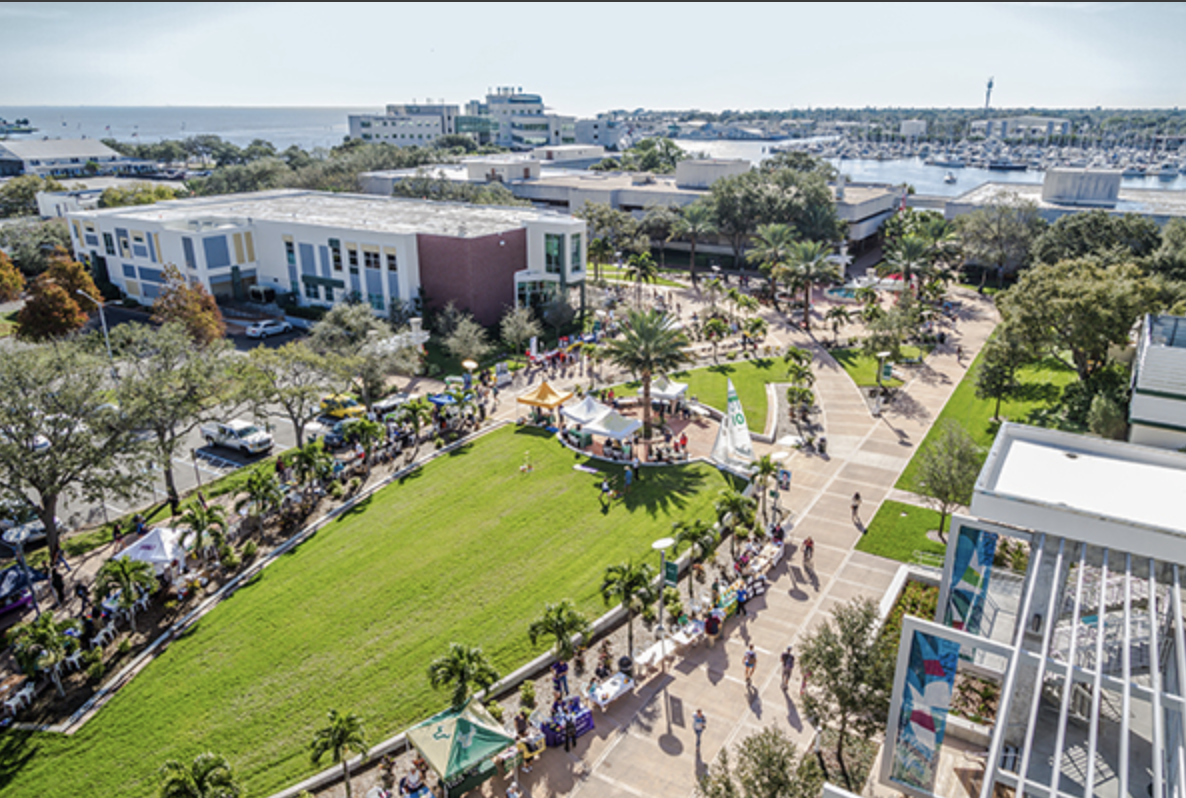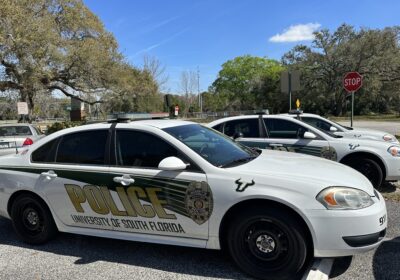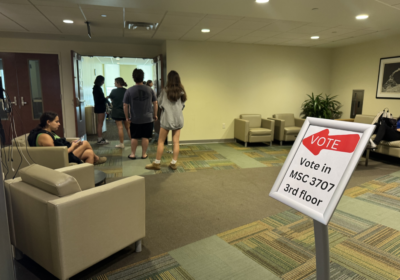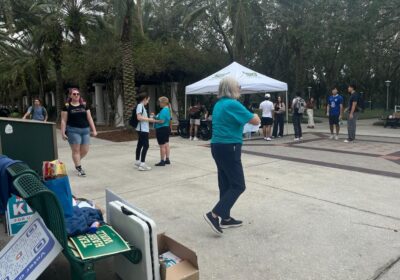Admissions rerouting some incoming students to St. Pete regardless of campus preference

In an effort to increase enrollment at the St. Pete campus, students who apply to USF after Jan. 6 will be rerouted to the St. Pete campus if their major is offered, regardless of preference stated on their application.
The Office of Admissions is working to direct new applicants to the St. Pete campus regardless of their campus preference to tackle the continuous decline in incoming students. The rerouting effort comes after the St. Pete campus experienced a sharp decrease in enrollment after consolidation led to the implementation of higher admission standards universitywide.
“We’re redirecting students now to St. Pete … if a student applied, and the application hit our system on or after Jan. 6, those students will start at St. Pete campus,” Dean of Admissions Glen Besterfield said. “If the major exists on St. Pete they will be redirected, [but] if the student applied as an engineering student, or the major doesn’t exist on St. Pete, … we’re not going to redirect them.”
Since the new plan went into effect Jan. 6, Besterfield has redirected 32 applicants to the St. Pete campus. While students won’t get to choose their campus when first admitted, they will be able to change their “home campus” after their first semester at USF.
“The students that we are redirecting, or any student that goes to St. Pete, that is their home campus,” Besterfield said. “The students we redirect there will have to stay for fall semester, and then they’re free to move.”
Overall, he predicts that 30% of all admitted students for the 2021-22 academic year will effectively enroll in the university while the other 70% will choose other colleges. Out of the 32 students redirected so far, Besterfield predicts that only 10 will end up enrolling at the St. Pete campus.
The Office of Admissions is also focused on increasing its “voluntary campaign” to encourage current students to switch their home campus to St. Pete. This campaign, conducted through email blasts and advertising campaigns, led 50 students to switch from the Tampa campus last year, according to Besterfield.
However, switching 50 students to St. Pete does not quite make up for the 200-person decrease that occurred after consolidation efforts began in 2018.
Consolidation caused the three campuses to adopt a universal admission criteria — which forced other campuses to raise their standards for the incoming classes.
“We were three universities with three different admission standards, higher on Tampa campus than on the other two campuses,” Besterfield said. “St. Pete was admitting high school students down as low as 2.7 GPA, but the Tampa campus had never admitted a student below 3.0.”
The consolidated university took on the requirements that Tampa had for incoming students, which consisted of an average GPA of 4.25 and SAT scores ranging from 1270 to 1340.
“Immediately, the class of 2018 at St. Pete went from 650 to 450,” Besterfeld said.
In light of the significant decline in enrollment, Besterfield set a target to increase the coming fall class of 2021 from 430 to 650 students. Despite the challenges, Besterfield said he remains optimistic about reaching the targets.
“Our projections are based upon the redirect campaign and we will be right around 650,” Besterfield said. “If apps come in stronger, we could pass that. If the apps come in a little weaker, we could be at 620, but we’re going to be close, and that is the intention.”
St. Pete campus Regional Chancellor Martin Tadlock is also focused on tackling the enrollment issue. He is most enthusiastic about the introduction of the new academic clusters, which he will be overseeing once he steps down from his chancellor position in December.
The clusters — environmental and oceanographic sciences, STEM education, visual and performing arts, business and health sciences — will only be offered at the St. Pete campus and will expand the appeal of the university, according to Tadlock.
“It will bring new degree program offerings to this campus that we’ve not had before, and it will bring new degree programs to this campus that you can only get here on this campus,” Tadlock said. “If you want to major in [a field] that fits within those clusters, eventually, when those are in place, you’ll have to come to St. Petersburg to get that major.”
Tadlock said the academic clusters are not meant to be an immediate solution to the decrease in enrollment, but rather a long-term effort to increase enrollment on the campus. The administration overseeing the project released a heavily estimated timeline of five years for the program to be complete due to the many tasks required, ranging from finding funding to hiring faculty.
He said some of the degree programs may be implemented as soon as next school year, but there is no final decision on the order as yet. One of these tasks requires finding funding from donors and partnerships, which is a primary concern of Tadlock.
“We’ll get there, as we’re able to get the partnerships and the funding in place that’s needed,” he said. “So the timeline is very blurred.”
Tadlock and other members of administration are also promoting diversity in enrollment through programs like Fuse, which allows students to complete a two-year degree at St. Petersburg College and then automatically transfer to the St. Pete campus once they get their associate’s degree.
“There is a misperception in the community that because of consolidation, and the rise in the admissions requirements, that students can’t get in any longer, so they don’t try [and] they apply to other places, just assuming ‘Well, there’s no way I’m going to get in.’ And that’s not true,” Tadlock said.
Tadlock also said that they were communicating with local high schools about enrollment in the summer, and encouraging seniors to pursue nontraditional paths like enrolling in the summer or spending their first two years at a community college in order to circumvent the newly raised admission requirements.
“Even though the admission requirements are very high for the traditional fall freshmen entry, there are lots of other ways to come to USF,” he said. “We’re trying to get that out there constantly in front of people to dispel that mythology that you can’t get to USF even though you got a 3.5 GPA in high school.”
Despite the challenges brought by consolidation, it provided the St. Pete campus with some much-needed resources from the Tampa campus to promote diversity, including scholarships and increased correspondence with local organizations to support student success, according to Tadlock.
“[The Tampa campus] had partnerships with companies, corporations and philanthropy groups that provided scholarships for more students than we were able [to offer, and better quality scholarships] than we were able to [give],” Tadlock said. “They had a national network of recruiters that we did not have, so all of those advantages that a large university had, we are now able to tie into and have access to.”
Increased communication with local high schools and guidance counselors has been vitally important during the process of recruiting students to the St. Pete campus, and to USF in general, according to Besterfield.
During the pandemic, he said the urgency to apply and enroll in colleges has decreased. This is because many students are not attending school in person where they would talk to friends about being admitted, visit guidance counselors to apply for scholarships or pass bulletin boards with advertisements for colleges.
“The whole college journey is changed because of the pandemic,” Besterfield said.
In addition, he said many students have been unable to schedule an SAT date due to testing site closures, and with the change in Bright Futures requirements for the class of 2021, many high school seniors are discouraged from applying to universities.
Between the pandemic, decline in applications, consolidation and Bright Futures changes, Besterfield said it became difficult to attract new students to USF.
“This is the worst time in American history to be a dean of admissions,” he said. “I can’t look at history, there’s no precedent, there are too many factors taking place.”
Besterfield and his colleagues made the decision to de-emphasize the importance of SAT scores and focus on the rigor of course and GPA instead, in hopes of accepting high-achieving students who may not have been able to retake and superscore the SAT because of pandemic conditions.
“I think we’re going to admit a better class than we have in the past because we’ve emphasized GPA,” Besterfield said. “Out of every crisis comes an opportunity.”
Tadlock said he hopes enrollment will pick up as the initiatives to bring in more students are fully implemented.
“More than anything else, I just want these students to realize that this is the best place in the state of Florida to go to school,” he said. “People haven’t discovered us yet, and I’m looking forward to students and their families discovering this place.”







